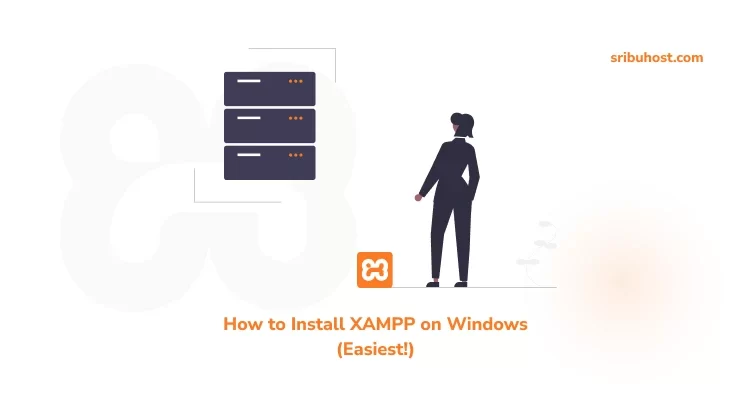Do you want to make a website on your own computer? It’s simple, we just need to learn how to install XAMPP.
This is frequently done by people who are learning to create websites but do not have the funds to purchase hosting and domains. Furthermore, many people test websites locally using XAMPP before publishing them to the internet.
Fortunately, installing XAMPP is simple. In addition, XAMPP can be run on a local computer without an internet connection. As a result, we can test the website faster without having to wait online first.
So, before we get into how to install XAMPP, let’s first get to know XAMPP!
What Is XAMPP?
XAMPP is a program that allows us to set up a local web server for testing websites. Many people enjoy using XAMPP because it is a lightweight application. Furthermore, XAMPP can be used on a variety of platforms, including Windows, Linux, and macOS.
Although XAMPP can run on macOS and Linux, this tutorial will only cover how to install XAMPP on Windows.
3 Steps How to Install XAMPP on Windows
Here are three simple steps to installing XAMPP on our local machine:
1. Download XAMPP
The first step in installing XAMPP is to download the installer file. Please Download XAMPP from the official website. Select the installer for the Windows operating system, then click the Download button.

Related post: How to Create a MySQL Database With XAMPP
2. Install XAMPP
- After we have finished downloading the installer file, proceed with the installation. During the installation, you may be asked if you are sure you want to install it. Please press Yes to proceed with the installation.
- The XAMPP setup wizard window will then appear. To proceed, click the Next button.

- The following screen will display options for which XAMPP components we want and do not want to install. For the purposes of this tutorial, we will leave it as is:

- Next, please choose the location where we want XAMPP to be installed. We will use the default setting from C:\xampp. You are free to specify the destination folder based on your preferences.

- On the following screen, we can choose the language to be used. We will use English in this case.

- To continue with the XAMPP installation, click Next.

- The XAMPP installation process will begin at this point. Wait until the installation is finished.

- After successfully installing, a notification will appear asking if you want to run XAMPP right away. These options can be checked so that XAMPP opens immediately after clicking the Finish button.

If a notification like the one below appears while installing XAMPP, click Allow access and leave the default settings.


Related post: How to Import MySQL Database in phpMyAdmin Easily
3. Run XAMPP
After the XAMPP installation is complete, we can try to run the XAMPP. Make sure XAMPP is open, then click the Apache and MySQL Start buttons. If everything goes well, Apache and MySQL will be green, as shown below.

Please use a web browser to access http://localhost to ensure that Apache and MySQL are up and running. If Apache and MySQL are up and running, it will look like this:

How to Install XAMPP Very Easy Right?
At this point, we’ve learned what XAMPP is and how to install it on Windows. Next, we can learn how to create websites on localhost, such as a Login Form PHP MySQL With Session.
If you have any comments or questions about this article, please fill out the form below. Also, if you found this article useful, please share it with your friends! Thank you very much.
